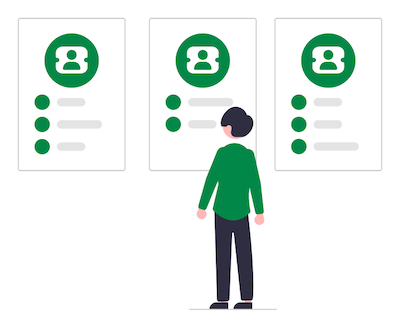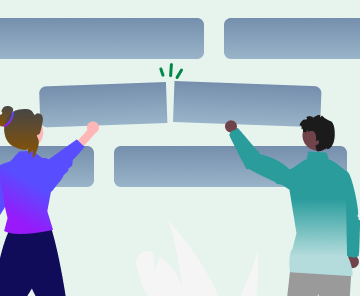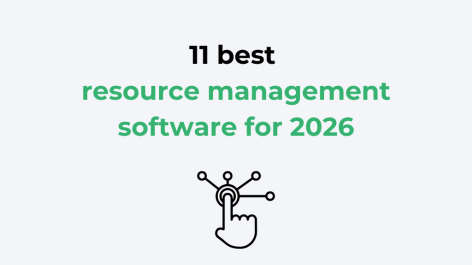When it comes to resource planning, it’s easy for complexity to creep in. One region uses a different process than another. One department relies on its own set of tools. Before long, no one has a clear picture of who’s doing what, or who’s even available to help.
In large organisations, resource planning is often where this fragmentation becomes most visible. Teams are trying to schedule projects, assign the right people, and forecast demand, but they’re doing it with partial information.
The issue isn’t that people aren’t trying to collaborate. It’s that the underlying systems weren’t built to support it. When visibility is patchy and skills data is inconsistent, it’s hard to align, let alone optimise. The result? Missed opportunities, overbooked consultants, and underutilised talent.
But it doesn’t have to be like this. When resource planning is unified across the business, with a shared view of skills, availability, and demand, complex organisations start to feel a lot more connected.
Why complex organisations struggle to work as one

When people talk about silos, it’s often framed as a cultural issue. But more often, it’s operational. Different teams have different systems. Job titles mean different things in different regions. Some teams are working from live data, others from spreadsheets last updated three weeks ago.
In professional services firms, those silos tend to form along familiar lines: Audit, Advisory, and Tax each planning resources in their own way, with little shared visibility. Local offices build processes that work for them, while central teams try to steer strategy from a distance. Everyone’s doing their best, but it’s rarely joined up.
Even with the best intentions, it’s hard to coordinate when everyone’s speaking a slightly different language. A resource manager in one business unit might see a gap they’re struggling to fill, unaware that someone in another team (or even another region) has exactly the right skills but is sitting underutilised. Not because they’re hidden, just because they’re invisible to the system.
There’s also a trust issue. Local teams often build their own workarounds because central systems feel clunky or misaligned with how they actually operate. Meanwhile, central teams lack confidence in the data coming in from different departments. You end up with layers of duplication: double-checking, chasing, reconciling.
The impact isn’t just internal. Clients feel it too. When teams are rushed, mismatched, or assembled too late in the day. Without a shared view of your people, it’s difficult to respond quickly or build the right team for the job.
The three capabilities needed to work as one

Even the most complex organisations can align more effectively, if they have the right foundations in place. Working as one doesn’t mean centralising everything or forcing every team into the same mould.
Here are three core capabilities that make that possible:
1. Shared visibility across teams and regions
You can’t plan what you can’t see. Without a joined-up view of people, skills, and demand, resource planning becomes reactive and inconsistent. Teams in Audit, Advisory, and Tax all need access to the same live data, so they can make informed decisions in real time, not based on assumptions or outdated spreadsheets.
With shared visibility, resource managers can spot availability across departments, rebalance workloads between teams, and avoid unnecessary overbooking. It also makes it easier to respond quickly when priorities shift, because everyone’s working from the same starting point.
2. A common language for skills and roles
Misalignment often starts with definitions. One team’s “project manager” might be another’s “delivery lead.” Without a shared language, matching people to the right work becomes harder than it needs to be.
A standardised skills taxonomy creates clarity. It ensures consistent role definitions and gives every business unit a structured way to describe capability. With Retain’s Skills+ module (powered by Lightcast) organisations can create a custom taxonomy that reflects their people, their work, and their evolving needs.
3. A single system to bring it all together
Technology doesn’t need to dictate process, but it should enable better ones. A unified platform makes it possible to plan, schedule, forecast, and report in one place, without toggling between disconnected systems.
That’s what Retain was built to do. It supports different ways of working while providing a single source of truth. So whether you're planning next quarter’s Advisory projects or navigating Audit’s peak season, you’re operating from the same foundation of data.
The bottom line
When these three capabilities are in place—visibility, shared language, and unified systems—collaboration becomes easier. Resource planning gets sharper. Teams feel more connected, and clients notice the difference. Complexity doesn’t go away, but it becomes a lot more manageable.
The human element: Working better together
Even with better systems in place, resource planning is never just about data. People still rely on instinct, relationships, and experience to make the right calls. And that’s exactly how it should be.
What unified tools like Retain do is give those decisions more support. Instead of relying on gut feel alone, resource managers can see exactly why a particular match was recommended—based on skills, availability, and role fit. If something doesn’t feel right, they can dig into the detail and choose a better option. Nothing is automated blindly. The control stays with the people making the decisions.
It also makes collaboration easier. When someone in Advisory wants to pull in a colleague from Audit, there’s less friction, because they can see that person’s availability, skills, and project history without chasing five different spreadsheets or calling around.
The same goes for career development. It becomes simpler to assign people to stretch opportunities or diversify their experience when you’ve got a clear, skills-based view of what they’ve done. And where they could go next. It’s a more proactive, intentional way to build balanced teams and support individual growth.
Ultimately, technology doesn’t replace human judgment. It just gives it more to work with.
The business impact of acting as one

When resource planning is joined up across the business, it changes the quality of work, the way teams operate, and how the business grows. Projects get staffed faster. With a single view of skills and capacity, there’s less time lost chasing availability or negotiating between teams. Work moves forward more quickly—because the right people are in place from the start.
Utilisation improves. People aren’t sitting underused in one department while another scrambles to fill gaps. Teams can flex across boundaries, and resource managers can plan more confidently with the full picture in front of them.
Client outcomes get better. When project teams are well matched, not just available but genuinely suited to the work, delivery tends to be stronger. And because resource decisions are backed by real insight, it’s easier to maintain consistency across regions or service lines.
Similarly, it also supports long-term planning. Patterns in demand and skills usage become clearer over time, making it easier to spot capability gaps early or invest in the right areas.
Start with visibility, end with unity
Bringing a complex organisation together doesn’t happen overnight. But it always starts with better visibility—into your people, their skills, and where they’re needed most.
From there, it’s about creating the conditions for alignment. Giving teams a common language. Removing the guesswork from planning. Making it easier to collaborate across departments and geographies without adding more process.
Retain Cloud was built to make that possible. One platform that connects skills, scheduling, and performance data—so even the most complex firms can act with clarity and consistency.
Because when everyone’s working from the same foundation, you can move faster, build stronger teams, and deliver better outcomes.
Ready to see how Retain can help your organisation work as one? Book a personalised demo.


